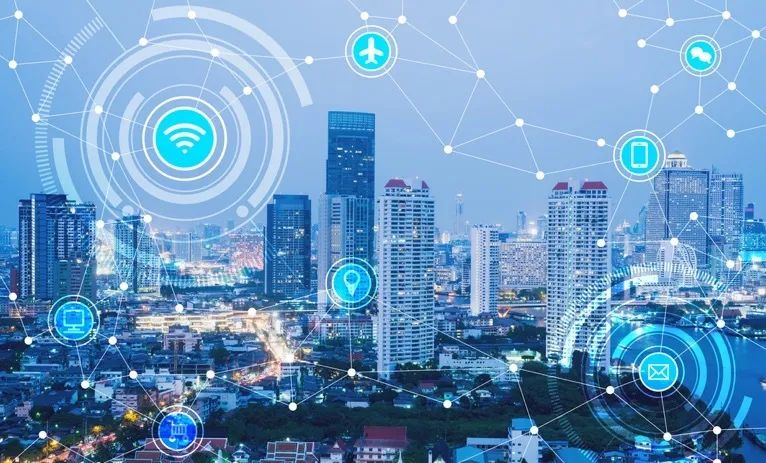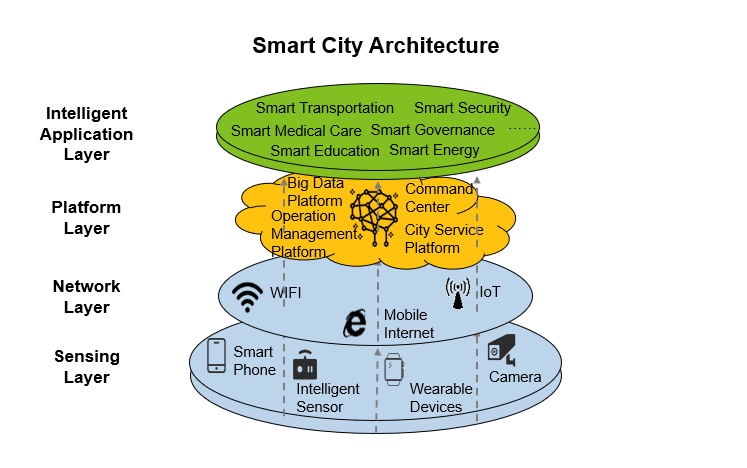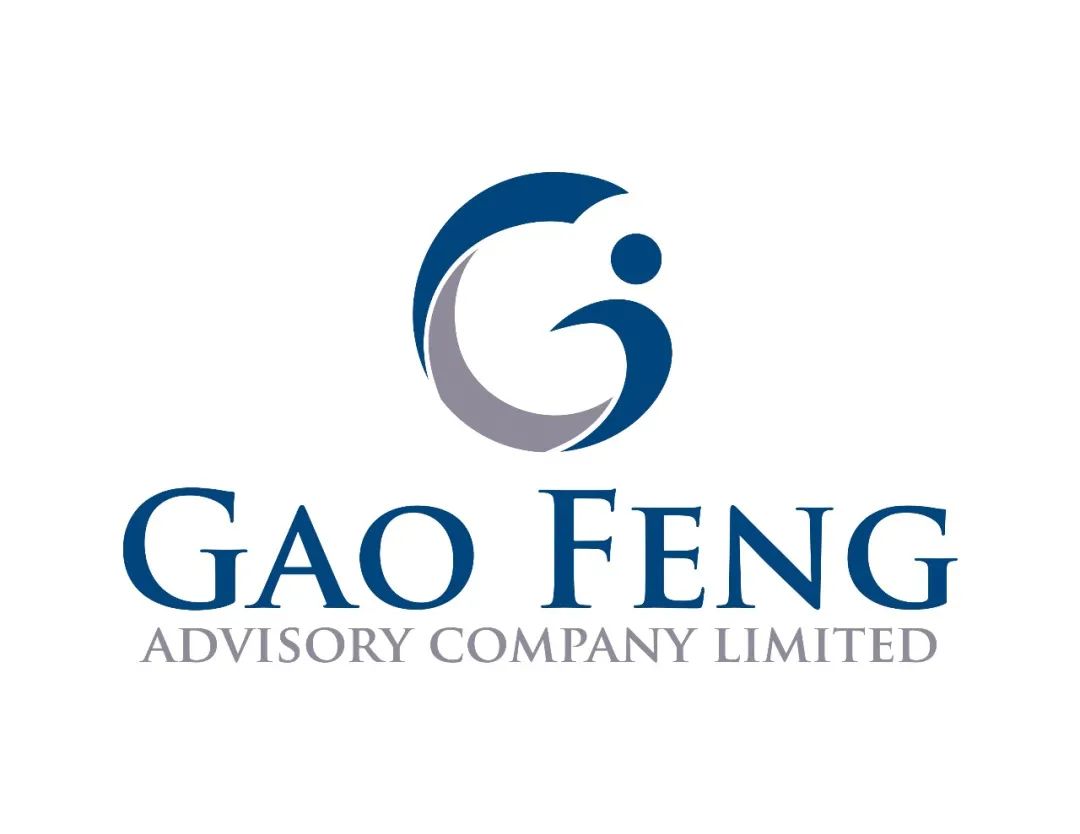Building People-Centric Smart Cities for the Next Generation in China
Building People-Centric Smart Cities for the Next Generation in China

By Jeff Lin, Edward Tse, Howard Lin and Melody Mao
August 2020
The COVID-19 pandemic triggered an inflection point for China and the way it interacts with the world. Following a sharp contraction in the first three months of the tumultuous year, the Chinese economy is regaining momentum; its GDP grew 3.2% in the second quarter compared to last year. The pandemic also shifted demand patterns dramatically as consumers moved en masse from offline to online. Work productivity apps gained over 308 million new users nationwide and the online education sector experienced unprecedented growth, estimated to reach US$63.6 billion in 2020.
However, the pandemic has also triggered some societal problems that China’s development model, preoccupied with growth, has failed to address. Going forward, governmental institutions are focused on improving China’s entire public agenda, not just one or two vertical areas. Calling biosecurity a "cornerstone of national security", President Xi Jinping called together health experts for an overhaul of systems for disease prevention, emergency response, government accountability as well as healthcare research and education in a meeting on June 2nd.
The national push towards public health will highlight the role of the "the New Generation of Smart Cities," where governments and businesses shall leverage advanced technologies such as 5G, Internet of Things (IoT), big data, Artificial Intelligence (AI), and blockchain, to enable decision-making and enhance urban governance. Since the first batch of pilot projects in 2012, hundreds of cities across China have experimented with smart city pilot projects, but the extent to which these initiatives have helped contain the outbreak is subject to debate. For instance, in spite of being one of the earliest smart cities, Wuhan still has experienced tremendous difficulties since the lockdown in late January. Thus, the New Generation of Smart Cities will not only focus on specific vertical areas but many others, including public health, and will evolve to be people-centric rather than technology-centric, tackling public issues in a continuous and sustainable pattern.
Evolution of China’s Smart Cities
We need to examine where China’s smart cities stand currently. Thus far, China has gone through several stages. From 2010 to 2013, governments and businesses began to conceptualize smart cities, which featured industrial applications of key digital technologies including wireless communication, GPS and fiber broadband. During this period, software system integrators from abroad dominated, such as IBM and Oracle.
The years between 2013 and 2016 saw mass deployment of ICT (Information and Communications Technology), consisting primarily of 2G/3G/4G, RFID (Radio Frequency Identification) and cloud computing. Equipment suppliers and integrators flourished, and public-private partnerships (PPPs) began to surface throughout the country. Local governments and businesses, both state- and privately-owned as well as foreign, collaborated to deliver smart city projects.
In the years that followed, the New Generation of Smart Cities have been driven mostly by advanced technologies, including 5G, AI, cloud computing, big data and blockchain. Cooperation between the public and private sectors intensified with government-led, market-oriented PPPs; internet companies, along with telecom providers and integrators, formed a new business ecosystem.
Bridging the Gap to People-Centric Smart Cities
How should the next generation of smart cities look like? In short, they should be "people-centric", serving to improve lives of residents. We expect the transition to take place under what the government calls the "New Infrastructure," which consists of three dimensions: information-based infrastructure such as 5G and IoT; converged infrastructure such as smart transportation and smart energy; and innovative infrastructure that enables research and development. Under the framework of the New Infrastructure, commercialization of these advanced technologies is set to significantly scale up, with the authorities prompting further PPPs in areas of public health and safety. Players from across the ecosystem shall join the game.
The functioning of a people-centric smart city will be based on a four-layered model (see Exhibit 1). At the bottom is the "Sensing Layer," representing a perceptive system throughout the infrastructure and consisting of data-collection apparatus, such as smart sensors, cameras, and wearable devices. Above this layer is the "Network Layer", which includes IoT, mobile Internet, and fixed broadband, enabling data transmission. Then lies the "Platform Layer", which makes decisions about leveraging technologies such as AI and cloud computing. At the top is the "Application Layer", which is based on the sensing, network, and platform layers, and fully applies intelligent decision-making to government affairs, public services and industrial development.
Exhibit 1
Smart City Architecture

Source: Gao Feng Analysis
Future cities will continue to be empowered by emerging technologies, which will be, and already have been, deployed by innovative platforms across sectors. Areas of applications include surveillance, law enforcement, supply chains, autonomous driving, online finance, education, healthcare, administration, and community life.
The Intersection of Real Estate and the Future Smart Cities
Along with the evolution of cities, real estate – where by definition, people and their lives take place – is set for transformation. Technological innovation in the real estate industry is altering investment, construction, facilities, software and services and this will have a significant impact on cities too.
It is critical for companies to reassess their strategies and navigate through the changing policy and business climate skillfully. Regulators have been keen on people-centric housing initiatives. In 2019, the National Health Commission set up a special committee dedicated to establishing national standards for smart homes, which will join forces with leading corporations and explore how real estate can better serve health and wellbeing of the people. The Ministry of Industry and Information Technology has also advocated a standardized elderly care system that capitalizes on big data, AI and 5G technologies. Drawing from the WELL Building Standard – a US-originated system for evaluating the impact of the built environment on its residents – the Chinese Real Estate Chamber of Commerce (which the co-author Jeff Lin co-founded) is working to create the country’s own set of standards and regulations for buildings and their impact on lives of residents.
Most importantly, recent trends in the macroeconomy as well as the real estate industry have necessitated a rethinking in the industry. In the last few years, growth in land prices has tended to decelerate, as regulators pushed to stabilize housing price expectations, and as market participants became increasingly rational. In addition, with the central government’s comment in 2018 that "houses are for living in, not for speculation", cities across China have been imposing stricter regulations on the housing market, introducing sales bans, and tightening financial regulations as well as improving risk management.
In what ways can the real estate industry prepare for the future? First, emerging technology, in combination with consequences of the pandemic, ushers in a transformation of the real estate industry. Following the outbreak, national and local authorities are feeling the urgency to construct an integrated information system for public health emergencies. For example, Shanghai has been conducting flood control and pollution and fire hazard monitoring via data mining and modeling enabled by over 166,000 sensor devices that collect nine million data points daily. This can also be used by health authorities to make faster, more reliable and timely decisions, by using intelligent buildings and facilities to help track and analyze disease statistics.
Second, the development of people-centric real estate can help tackle many public challenges such as a health crisis. For example, the control center can disinfect public spaces by remotely operating equipment via an intelligent network; infrared thermal imaging technology can monitor body temperatures of people entering a residential area, providing real-time alerts to the security center. People-centric housing could also alleviate the burden of China’s aging population, through perception equipment that can help monitor and manage health conditions.
Third, PPPs will continue to be the primary driving force of future smart cities. PPPs can be seen as a part of China’s unique development model which it has evolved into since the 1980s. Specifically, at the top, the central government sets the national agenda, providing clear directions for the rest of the country. At the grass-roots level, fast-growing and highly dynamic entrepreneurs drive China’s growth and innovation. In the middle, local governments compete and cooperate to form regional clusters, while serving as the "glue" between the central government and grass-roots businesses.
Due to the complexity of the development of smart cities, building the New Generation of Smart Cities will require coordinated efforts from governments and businesses. Whereas the central government has set top-level guidelines, local governments will set out to implement specific projects based on existing resources and experience in their own adaptive, time-efficient, and sustainable ways. State-owned and private enterprises are both essential to realizing the potential of smart cities. During the COVID-19 outbreak, rapid completion of Wuhan's Huoshenshan and Leishenshan hospitals was made possible by coordinated efforts between state-owned enterprises and privately-owned enterprises. Therefore, city authorities will be more open-minded towards private businesses and will be more inclined to encourage collaboration, in forms such as direct subsidies and alliances.
What are the Implications?
The future of people-centric smart cities is gathering pace in China. President Xi Jinping, during his visit to Hangzhou’s city brain control center, reemphasized that smart cities should be built around people and aim to pinpoint blind spots. Smart cities will allow people’s daily lives to become safer and easier, and the transformation has just begun. Some proactive local governments have made moves, and many more will soon join the transformation. The development in "New Infrastructure" and improvement in technology will allow previously undreamt-of services to enter the realm of reality. This will provide major opportunities for companies who can provide capabilities to contribute, especially those with the right technology and solutions. Looking forward, as people's expectations and needs for smart cities evolve, the real estate industry also needs to reexamine its role and see where they currently stand and how they can contribute, and gain value from, the next generation of smart cities.
About the Authors
Jeff Lin is a Managing Director at Gao Feng Advisory Company. He also founded Smart Republic, a cross-industry platform to promote strategic cooperation between advanced industries and real estate. He is the co-founding Vice Chairman of the Smart and Healthy Home Branch Association under the Chinese Medical Information and Big Data Association. Mr. Lin graduated from the University of Chicago with an MBA. He was previously the Vice President and Chief Strategy Officer of Country Garden Holdings, a Fortunate 500 company with real estate-related revenue of over US$ 90B. Before Country Garden, he spent over 25 years in senior positions in various international consultancies and investment corporations, including The Boston Consulting Group, Booz Allen Hamilton, Roland Berger, OC&C, and Dasym Asia (previously SBG). He provided investment and strategy consultancy services for more than 20 Global 500 enterprises and over 20 VC/PE funds. He has been focusing on areas that include TMT, Real Estate, Healthcare, Investment, etc.
Edward Tse is founder and CEO, Gao Feng Advisory Company, a founding Governor of Hong Kong Institution for International Finance and Adjunct Professor, School of Business Administration, Chinese University of Hong Kong. One of the pioneers in China’s management consulting industry, he built and ran the Greater China operations of two leading international management consulting firms (BCG and Booz) for a period of 20 years. He has consulted to hundreds of companies, investors, start-ups, and public-sector organizations (both headquartered in and outside of China) on all critical aspects of business in China and China for the world. He also consulted to a number of Chinese local governments on strategies, state-owned enterprise reform and Chinese companies going overseas, as well as to the World Bank and the Asian Development Bank. He is the author of several hundred articles and four books including both award-winning The China Strategy (2010) and China’s Disruptors (2015) (Chinese version «创业家精神»).
Howard Lin is a Project Manager at Gao Feng Advisory Company and the Deputy General Manager at Smart Republic Company. He is a former real estate professional who has various experiences in smart city collaboration with high-tech companies. He is focusing on new technologies, tele healthcare and real estate research.
Melody Mao is a Consultant at Gao Feng Advisory Company based in Shanghai. She has provided consulting services to both multinational and local clients, and she is experienced in real estate, technology, and healthcare sectors, focusing on growth strategy, new market entry and business model development.


Gao Feng Advisory
Gao Feng Advisory Company is a professional strategy and management consulting firm with roots in China coupled with global vision, capabilities, and a broad resources network
Wechat Official Account:Gaofengadv
Shanghai Office
Tel: +86 021-63339611
Fax: +86 021-63267808
Hong Kong Office
Tel: +852 39598856
Fax: +852 25883499
Beijing Office
Tel: +86 010-84418422
Fax: +86 010-84418423
E-Mail: info@gaofengadv.com
Website: www.gaofengadv.com
Weibo: 高风咨询公司
